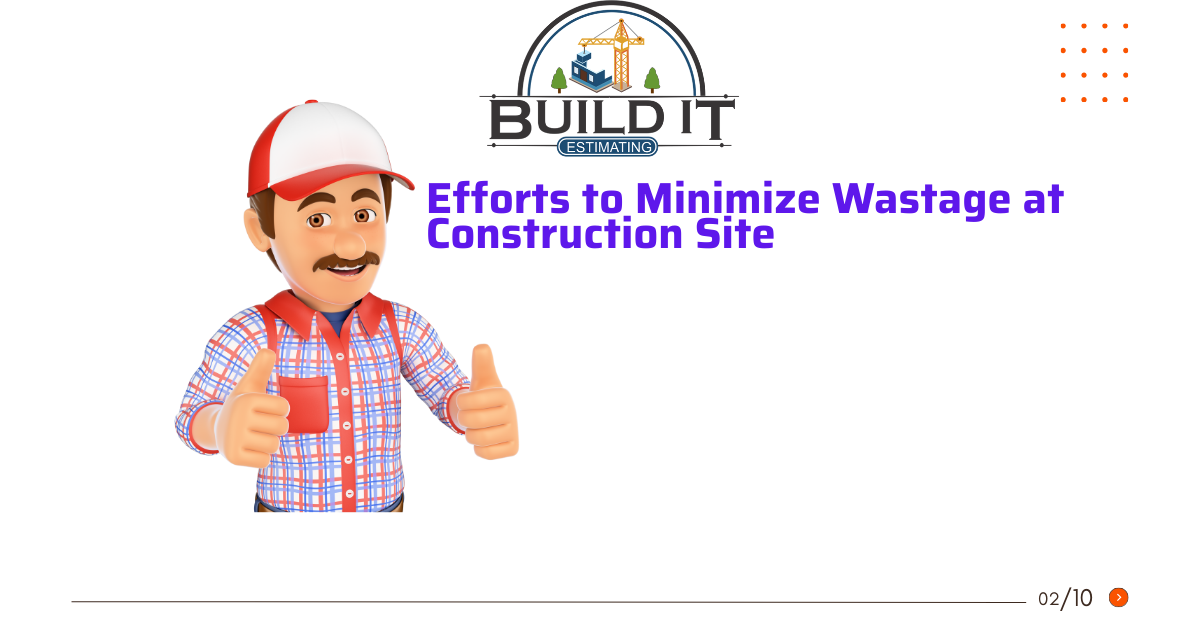In the construction industry, minimizing wastage at Construction Site is not just an ethical responsibility but also a critical factor for project efficiency and cost savings. Waste reduction leads to a cleaner, safer work environment, improves resource utilization, and enhances sustainability. Implementing effective strategies to minimize waste at construction sites can significantly impact the overall success of a project, fostering a more sustainable and responsible industry.
Understanding Construction Waste
Construction waste encompasses a wide range of materials discarded during building activities. These include excess materials, damaged goods, packaging waste, and debris. The sources of construction waste are diverse, ranging from over-ordering and improper storage to inefficient material handling and poor project planning. The impact of waste on construction projects is substantial, leading to increased costs, project delays, and environmental degradation.
Planning for Waste Reduction
Effective waste reduction begins with thorough planning. Initial project planning should incorporate waste reduction goals, focusing on minimizing excess and optimizing material use. Involving stakeholders early in the planning process ensures that everyone is aligned with the waste reduction objectives. This collaborative approach helps to identify potential waste sources and implement strategies to mitigate them from the outset.
Efficient Material Management
Proper material management is crucial for reducing waste. This involves:
Proper Storage: Ensuring materials are stored correctly to prevent damage and deterioration.
Inventory Management: Keeping accurate records of materials to avoid over-ordering and ensure timely use.
Material Tracking: Implementing systems to track material usage and identify areas where waste can be reduced.
Recycling and Reusing Materials
Recycling and reusing materials are effective strategies for waste reduction. Identifying recyclable materials such as metal, wood, and concrete helps divert waste from landfills. Establishing recycling protocols ensures that materials are correctly sorted and processed. Reusing materials, such as using salvaged components or repurposing off-cuts, can also significantly reduce waste and lower costs.
Implementing Lean Construction Principles
Lean construction principles focus on maximizing value and minimizing waste. Key principles include:
Value Stream Mapping: Identifying all steps in the project process to eliminate non-value-adding activities.
Just-In-Time Delivery: Ensuring materials arrive only when needed to reduce inventory waste.
Continuous Improvement: Regularly assessing processes and implementing improvements to reduce waste.
Training and Education for Workers
Training workers on waste reduction techniques is essential. This includes:
Importance of Training: Educating workers on the benefits of waste reduction and how it impacts the project and environment.
Types of Training Programs: Offering training sessions on efficient material handling, recycling practices, and lean construction methods.
Fostering a Culture of Waste Reduction: Encouraging workers to adopt waste-conscious behaviors and practices.
Using Technology to Reduce Waste
Technology plays a vital role in reducing construction waste. Digital tools and software solutions can enhance efficiency and accuracy in material management. Real-time tracking and reporting systems help monitor waste production and identify areas for improvement. Technologies such as Building Information Modeling (BIM) can optimize project planning and material use, further reducing waste.
Adopting Sustainable Construction Practices
Sustainable construction practices involve using eco-friendly materials and methods. These include:
Eco-Friendly Materials: Choosing materials with lower environmental impact, such as recycled or sustainably sourced products.
Green Building Certifications: Pursuing certifications such as LEED or BREEAM to demonstrate commitment to sustainability.
Benefits of Sustainability: Enhancing reputation, attracting eco-conscious clients, and contributing to environmental conservation.
Effective Waste Segregation
Setting up effective waste segregation systems is essential for managing construction waste. This involves:
Waste Segregation Systems: Establishing designated areas for different types of waste, such as recyclables, hazardous materials, and general waste.
Educating Workers: Training workers on how to properly segregate waste and the importance of compliance.
Ensuring Compliance: Regularly monitoring and enforcing waste segregation practices to ensure adherence to protocols.
Monitoring and Evaluating Waste Reduction Efforts
Continuous monitoring and evaluation are crucial for successful waste reduction. This includes:
Setting KPIs: Establishing key performance indicators to measure waste reduction progress.
Regular Audits: Conducting regular audits to assess waste management practices and identify areas for improvement.
Continuous Improvement Strategies: Implementing feedback loops and improvement strategies to refine waste reduction efforts.
Case Studies of Successful Waste Reduction
Examining case studies of successful waste reduction can provide valuable insights and lessons learned. These real-world examples illustrate effective strategies and practices that have led to significant waste reduction. Case studies highlight the importance of planning, collaboration, and continuous improvement in achieving waste reduction goals.
Legal and Regulatory Considerations
Compliance with legal and regulatory requirements is essential for waste management. This involves:
Local Regulations: Understanding and adhering to local waste disposal regulations and guidelines.
Waste Disposal Guidelines: Ensuring that waste is disposed of properly, following all relevant regulations.
Environmental Standards: Complying with environmental standards to minimize the impact of construction waste on the environment.
Future Trends in Construction Waste Management
The future of construction waste management is shaped by innovations and emerging trends. These include:
Innovations in Waste Reduction: Exploring new technologies and methods for reducing waste.
Future Technologies: Embracing advanced technologies such as AI and machine learning for predictive waste management.
Sustainability Trends: Increasing emphasis on sustainability and eco-friendly practices in the construction industry.
EFFORTS TO MINIMIZE WASTAGE AT CONSTRUCTION SITE
Minimizing wastage at construction sites requires a comprehensive approach that involves planning, efficient material management, recycling, lean construction principles, training, and the use of technology. By implementing these strategies, construction companies can enhance project efficiency, reduce costs, and contribute to environmental sustainability.
Conclusion
Efforts to minimize wastage at construction sites are crucial for enhancing project efficiency, reducing costs, and promoting sustainability. By adopting effective strategies such as planning, efficient material management, recycling, lean construction principles, and leveraging technology, construction companies can significantly reduce waste and improve their overall performance. Continuous monitoring and embracing future trends will ensure that the industry remains sustainable and responsible.

